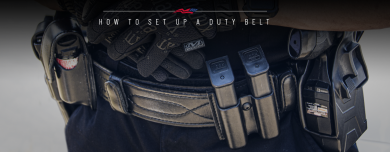
When I first started in law enforcement the term “friendly fire” was rarely heard, except when speaking of earlier military experiences. However, in recent years there has been a dramatic change, so much so that not only is friendly fire a real threat, it now has its own name when involving law enforcement – “Blue on Blue.”
The threat of friendly fire between fellow law enforcement officers, blue on blue shootings, has always existed. But, today it seems to be a constant hazard that every officer needs to prepare for rather than a “what if” scenario only discussed during roundtables. Unfortunately, the only way to limit the possibility that you will target, or be targeted by, a fellow officer is to take steps to ensure it does not happen on your watch.
Know when to be a witness and when to be an active participant
Many blue on blue shootings involve an undercover officer or off duty officer being mistaken for the bad guy. Usually this is due in part to the non-uniformed officer attempting to assist in an ongoing police incident. Although it is often hard for any officer to resist jumping into the fray, sometimes it is the best option. If there is a possibility that other officers will not know or recognize you, either due to your clothing or because you are out of your jurisdiction, being a professional witness may be of more benefit to everyone.
Be sure to identify yourself early and often
If you find yourself in the middle of an arrest, whether a willing participant or a bystander caught up in the action, the most important thing you can do is identify yourself. Many departments utilize safe words or daily colors to identify undercover officers but each of these can be lost in the confusion of an active arrest. If your department mandates such measures, of course you should use them, but you should also display your badge for everyone to see and verbally identify yourself both to officers on the scene and dispatchers if you have a radio or cellphone available.
Do as you are told, and do it now
Regardless of whether or not you are wearing the proper color, used the correct safe word or displayed your badge surrounded by a neon light, there is a good chance that responding uniformed officers may not believe you. If you find yourself in a situation where uniformed officers are questioning your identity, remember to act how you would expect someone else to act if roles were reversed. Do not argue. Do not make any movements that could be considered hostile or threatening. Follow the officers’ commands and comply with all instructions, allowing the officers to maintain control of the situation and you. It will be a lot easier to convince someone you are a fellow officer if you are not acting like a suspect.
Maybe a suspect gets away. Maybe you have to lie on the ground with your face in the dirt until your identity can be confirmed. But neither of these outcomes is as devastating as an unnecessary and avoidable blue on blue shooting.
Disclaimer: The content in this article is the opinion of the writer and does not necessarily reflect the policies or opinions of US Patriot Tactical.







